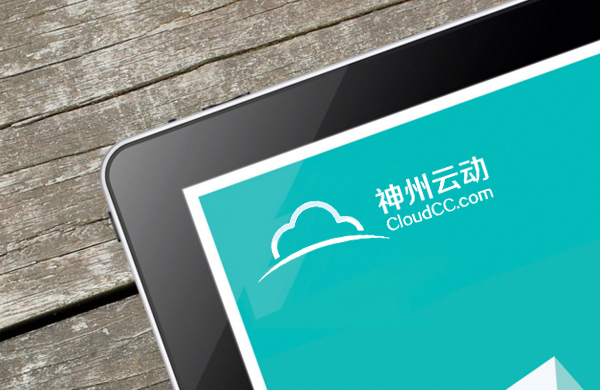
CloudCC CRM观点:清晰的CRM数据来自良好的移动体验
毫无疑问Salesforce是目前应用最广泛的客户关系管理(CRM)系统之一。然而,BYOD(bring your own device)的转换将改变销售和营销的游戏规则,所以我们需要直接在CRM当中融合技术。
数据科学当然是其中的关键一环。从Salesforce日前对RelateIQ的收购可以明显看出,这个行业正在转向数据科学,希望通过数据科学实现一种分析和利用数据的先进方式。不过即使数据科学对CRM和销售生产力未来的成功起到了举足轻重的作用,但是CRM的革命没有那么容易实现。销售人员的分析水平取决于他们系统获取的数据,为了确保销售人员可以获取高质量的数据,他们的平台需要同时拥有强大的后端和良好的用户体验。
销售管理人员清楚知道,将移动平台的便捷和效率带到CRM和Salesforce是销售生产力的新前沿。《经济学人》在2013年的一次调查发现全球有33%的企业高管打算在未来三年大力投资企业内部移动应用。然而我们要走的路还有很长,因为到目前为止,在这些高管当中只有15%真正有做到大力投资移动应用。
在开拓移动应用方面,销售人员比企业的其他员工都要走得更前。那为什么不是所有的销售团队都有利用移动工具来提升生产力和效率呢?很多其他行业都已经适应了移动平台,在移动支付领域,复杂的付款信息输入过程已经被取代,有些应用甚至可以实现一键支付。还有用户只需通过一次点击就可以使用Uber或Lyft打车。但是企业解决方案提供商在这方面一直进展缓慢,无法提供简单而自然的用户体验,这是CRM的一大痛点。
CRM数据输入的过程可能需要消耗大量的时间和人力。很多销售人员每周都会花上一整天的时间来更新他们的CRM数据。他们非常渴望数据输入的移动解决方案,最好还能帮助他们完成交易和提升利润。虽然现在市场上已经有一些可用的选择,但是大部分的企业应用的用户友好度都远远不如消费者应用,这样不仅会影响这些应用的普及,而且一直都无法解决数据输入滞后和不一致问题。
此外,企业正在迅速普及云端CRM和商业智能技术,希望这些技术可以帮助企业进行决策,但是这些决策的水平取决于它们的基础数据。因此,改善数据输入的流程将会是一个很好的开始。
但是利用移动工具来修复数据输入问题只是成功的第一步。可执行的销售数据被储存在多个数据库当中:CRM、日历和电子邮件只是入门。成功的销售代表会利用LinkedIn来寻找决策人员;利用Evernote这样的工具进行记录;利用Box、Dropbox、Sharepoint等工具来储存参考材料,他们还会使用很多其他的工具。普通的销售代表会使用大量的应用来管理他们的工作流程。这些工具可以提升他们的生产力,但是他们也知道如果这些工具之间缺乏整合的话,他们就需要在每个应用上花费大量的时间。
这些数据库包含了相互联系的信息,但是只有将它们作为一个整体来分析才能最大限度地发挥它们的价值——打开数据科学创新的大门,帮助销售人员和销售经理专注于最有价值的交易。一个高效的销售生产力平台需要将不同的数据库联系在一起,整理好交易和客户关系的相关内容,帮助销售人员和销售经理认识到未来的机遇。
CRM系统不会消失,它们提供了销售人员所需的数据基础和工具,帮助他们进行报告和预测工作。但是他们还是需要完成一些工作才能从这些投入当中获取价值。数据科学当然是成功的一个要素,但如果没有移动优先的方法和对生产力的追求,这个“科学”也不能为你带来什么。

原文:
Editor’s note: Andy Byrne is founder and CEO of Clari, a mobile-first sales productivity platform. Prior to Clari, Andy was part of the founding teams at Clearwell Systems and Timestock, Inc.
There is no doubt that Salesforce is one of the most widely used customer relationship management systems. However, the shift to BYOD is changing the game for sales and marketing, and we need an immediate infusion of technology in CRM.
Data science is certainly a key piece of the puzzle. With Salesforce’s recent acquisition of RelateIQ, it is evident that the industry is looking to data science to fuel a new and improved way of analyzing information and making it useful. But while data science is vital to the future success of CRM and sales productivity, a CRM revolution will take more than that. Your analysis is only as good as the data that goes into your system. And to ensure that sales reps input quality data, they need a platform that marries a powerful back end with an experience they love.
Executives know that bringing the convenience and productivity of mobile to CRM and Salesforce is the next frontier for sales productivity. A 2013 survey by The Economist found that 33 percent of global executives plan to invest heavily in internal mobile apps over the next three years. Yet we have a long way to go. Only 15 percent of these executives have actually invested at this point.
More than any other enterprise worker, sales professionals are blazing the mobile trail. So why doesn’t every sales team look to mobile to deliver breakthrough productivity and effectiveness? Many other industries have adapted; in the world of mobile payments, the painstaking process of entering billing information has been replaced, in some cases, with a single touch. And those looking to catch a ride on Uber or Lyft need only one click. But enterprise solution providers have been slow to deliver such simple and natural user experiences. And this is a big pain point for CRM.
CRM data entry can be a time-consuming, laborious process. Most sales reps sacrifice a full day every week just updating their CRM. Reps are starved for a mobile solution that allows them to easily enter data on the go. And more so, one that actually helps close deals and make them money. While there are some options out there now, most enterprise apps are far less user-friendly than their consumer counterparts, preventing adoption and perpetuating the problem of lag-behind, inconsistent data entry.
On top of that, companies are rapidly adopting cloud-based CRM and business intelligence technologies to fuel selling decisions, but those decisions are only as good as the underlying data. Fixing the process of data entry is a good start.
But putting mobile to work to fix data entry is only the first step. Actionable sales data is located across many silos: CRM, calendars, and email are only the start. Successful reps use LinkedIn to identify decision-makers; tools like Evernote for notes; Box, Dropbox, Sharepoint and other online storage systems for reference material; and many others. A typical rep uses a dozen apps to manage the pipeline. They use these tools to be more productive, but they know the lack of integration means a time-consuming dance as they sort through each app individually.
These silos contain interrelated information most useful when analyzed as a whole — opening the door for innovative data science to help reps and managers focus on the most effective next steps for the most promising deals. An effective sales productivity platform needs to tie data silos together, reorganizing the content around deals and relationships to give sales reps and managers a complete picture of their opportunities.
CRM systems are not going away. They provide the data infrastructure and tools they need for reporting and forecasting. But work needs to be done to derive value from these investments. Data science is definitely part of the equation, but without a mobile-first approach and an eye toward productivity, the “science” isn’t going to do much for you.
相关新闻
- CloudCC CRM探讨大数据价值从发现到创造的应用现状 2016-04-06
- CloudCC CRM观点数据挖掘是大数据的核心 2016-04-06
- CloudCC:CRM颠覆传统助力企业销售工作,拼的就是实力! 2016-04-05
- CloudCC CRM探讨企业使用crm解决什么问题? 2016-04-05
- CloudCC CRM解答CRM设计复杂是否降低了效率 2016-04-01
- CloudCC:CRM既要“追赶时尚”,更要“不忘初心” 2016-04-01
- CloudCC CRM探讨企业为什么需要CRM? 2016-04-01
- CloudCC CRM探讨CRM在企业管理中的三大作用 2016-03-31